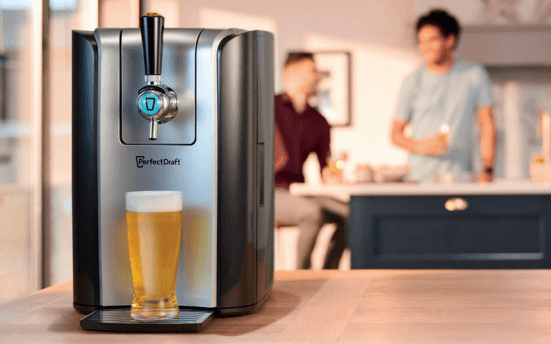
More and more of you are getting into homebrewing, and naturally, many questions arise about the process. We do our best to support you with images, videos, and even personal advice from Alexandre, our in-house brewer. One recurring question we hear often is about the cloudiness in your beer. Is it normal, or is it something you need to fix? We’re here to clarify things (pun intended)—so much so that “polyphenol” might become your new favorite word.
Understanding beer cloudiness
Some beer styles, like Witbiers, are naturally hazy due to protein aggregates or their interaction with polyphenols—organic molecules found in plants. This haze can reduce a beer's shelf life and increase its vulnerability to oxidation and contamination. But don’t worry—there are ways to reduce or eliminate haze depending on its source.
There are two main types of haze that can affect your beer: biological and non-biological.

Biological haze
In more serious cases, wild yeasts or bacteria may contaminate your beer, typically due to poor sanitation, leading to off-flavors. In less severe cases, cloudiness may simply result from an overgrowth of yeast in suspension.
To combat this, use yeast strains with strong flocculation properties. Flocculation refers to the yeast’s ability to clump and settle at the bottom of the fermenter after fermentation. Cold crashing—chilling your fermenter in a fridge for 12–24 hours—can also help yeast settle out.
If cold crashing doesn’t resolve the haze, you may need to consider additional clarification methods such as filtration or centrifugation.
Non-biological haze
This is caused by the interaction of proteins and polyphenols (also known as tannins). These compounds contribute to astringency and bitterness but are also the first to oxidize. Once oxidized, polyphenols bind with proteins, creating haze and reducing shelf life.
Chill haze
Chill haze forms when beer is cooled (around 0°C) and disappears when it warms up (around 20°C). It typically results from slow wort cooling after boiling. Using a wort chiller (coil or plate exchanger) can help prevent this issue.
Permanent haze
This type of haze persists even at room temperature. It’s caused by the formation of stable polyphenol-protein complexes due to oxidation.
How to reduce non-biological haze
- Use high-quality ingredients—especially well-preserved hops, protected from light and oxygen.
- Minimize the use of protein-rich grains (like wheat and oats); opt for barley instead.
- Adjust mash pH to 5.3 using acids like lactic acid before the first beta-amylase rest (62–63°C).
- Never exceed 78°C before filtration or during sparging to avoid excessive polyphenol extraction.
- Cool the wort rapidly after boiling.
- Use a clarifying agent like Irish Moss at 5g per 19L to coagulate proteins.
- Use an efficient filtration system and recirculate wort to avoid insoluble particles.
- Limit oxygen exposure during transfers to prevent oxidation.
- Ensure complete starch conversion during mashing. If haze remains, your mash may have needed more time.
The iodine test
This test detects unconverted starch. Add a few drops of iodine to a wort sample. If the color turns blue, starch is still present and saccharification is incomplete. Never return the tested wort to your brew—iodine is toxic.
Read other articles : Why is beer a diuretic ? and What is the German purity law ?
ALCOHOL ABUSE IS DANGEROUS TO YOUR HEALTH. DRINK RESPONSIBLY.







